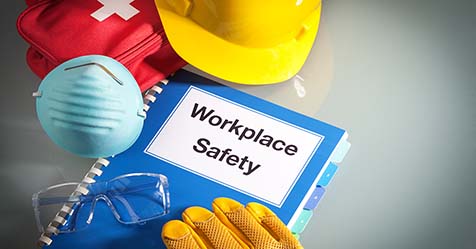Surgical site infections and a lack of adherence to nursing standards began complicating infection control measures at Long Beach Medical Center in Long Beach, New York. In response, an interdisciplinary team formed to scrutinize and analyze current cleaning practices, responsibilities, and schedules to determine best practices.
The team, consisting of the environmental services (EVS) director, manager, and supervisor; the surgical services director and manager; and the infection prevention director, met numerous times to successfully complete the project. The result was a guideline outlining departmental responsibilities, levels of required cleaning, frequency of cleaning, and documentation logs for each area.
Peri-op and cath lab training
Along with providing initial training, EVS created and administered annual training and annual competencies for the EVS OR staff, the OR perioperative staff, and the cardiac catheterization techs. As the hospital-recognized experts, EVS now provides yearly training and competency cleaning assessment for all OR perioperative staff as well as the cardiac cath techs functions with cleaning components. This training includes classroom courses and hands-on practice for cleaning and disinfection. Competencies are based on Association of Perioperative Registered Nurses (AORN) cleaning principles and guidelines. EVS and infection prevention produced terminal cleaning log books and checklists as recommended by AORN for both the ORs and for the Caesarean section (C-section) room.
ATP monitoring
EVS also developed and implemented a high-touch monitoring system in the OR and C-Section room, implementing staff training and the monitoring and publishing of results. While methods to clean and sanitize surfaces and equipment in the health care environment vary, the need to measure the effectiveness of cleaning practices is universal. Soiled surfaces and equipment can quickly lead to microbial contamination, and ultimately, the infection of patients or personnel. Adenosine triphosphate (ATP) cleaning verification provides accurate and meaningful results that help EVS workers define and monitor cleaning standards. As the transmission of many health care-acquired infections (HAIs) is related to contamination of near-patient surfaces and equipment, EVS staff developed programs to optimize the thoroughness of high-touch surface cleaning as part of terminal cleaning for perioperative areas. The detection of ATP, the universal unit of energy in all living cells, immediately determines if surfaces and reusable medical equipment are truly clean. Software applications allows EVS staff to track and ensure the verification of cleaning results, quickly identify problem areas, compare multiple facilities or areas, and generate reports for management and record keeping. Pre-set reports allow for the easy analyzation of data.
Audits
ATP high-touch monitoring audits will increase patient and staff satisfaction and decrease HAIs by implementing a reliable measurement system as to how well EVS staff is terminal cleaning perioperative areas. Perioperative areas for this project are defined as surgical services’ operating rooms, C-section rooms, and cardiovascular services catherization labs. Audits improve services and help ascertain where departmental weaknesses lie. Immediately after the audits are completed, EVS managers discuss the findings with their staff and work to correct deficiencies as soon as possible.
Tracking, trending, and assessment
Tracking and trending audit findings help us determine deficiency patterns. These patterns, in turn, allow us to draw conclusions and make recommendations that help to implement:
- Changes or additions to the ongoing education/training programs
- New or revised policies/procedures
- Staffing pattern changes
- Equipment changes
- Staff counseling/discipline.
An annual competency assessment validates employees’ ability and knowledge to perform their job-specific duties. Competency criteria are determined by the director or designee as part of the department education plan. Competency assessment is documented on the competency criteria form and retained in the department employee files. Annual review and update of the departmental education and training program will be based on assessed needs.
A successful infection prevention program needs an interdisciplinary team with EVS staff leading the plan. Add quantifying goals—along with methods for determining and verifying results—and your team has a road map for success.




